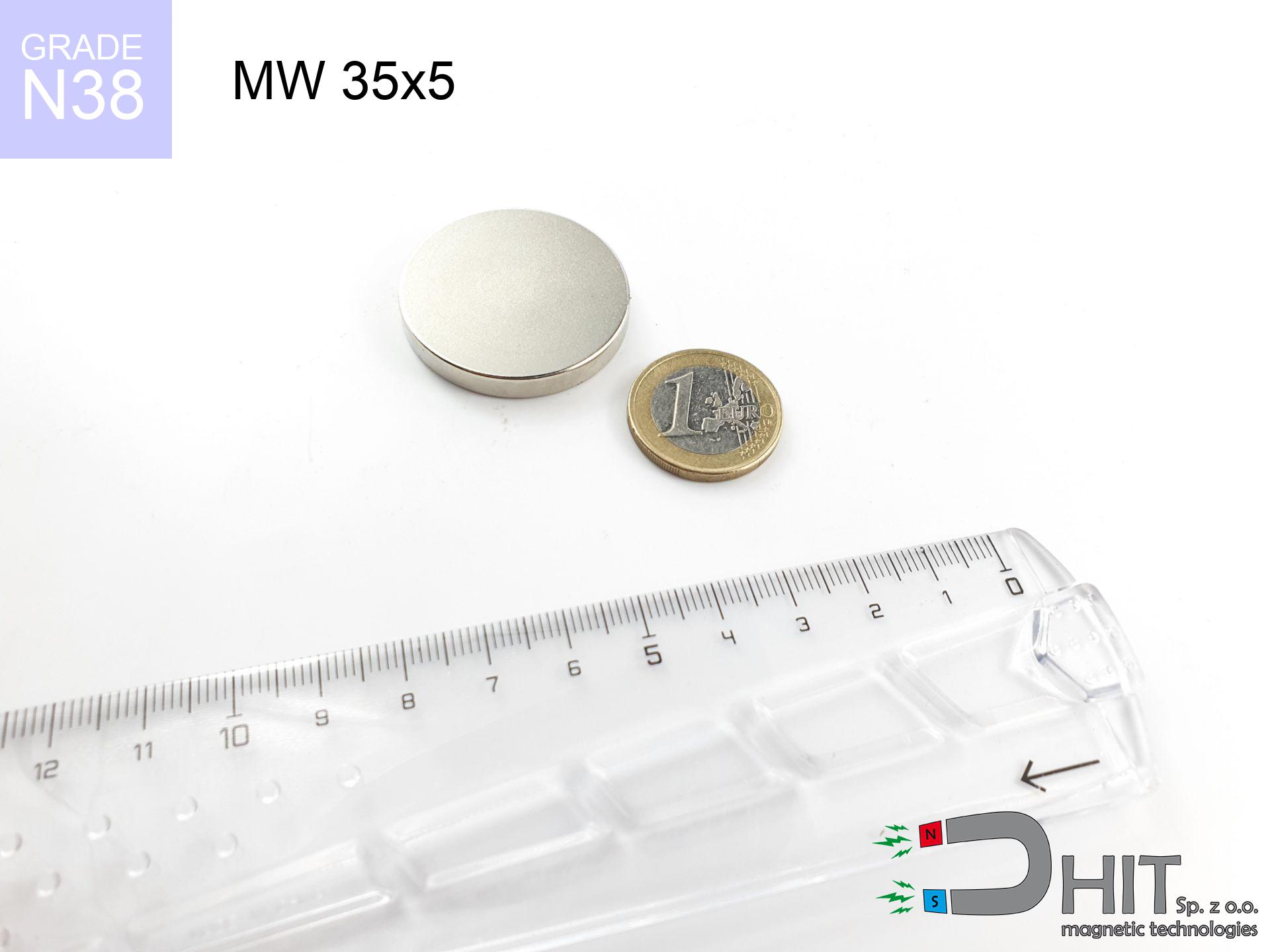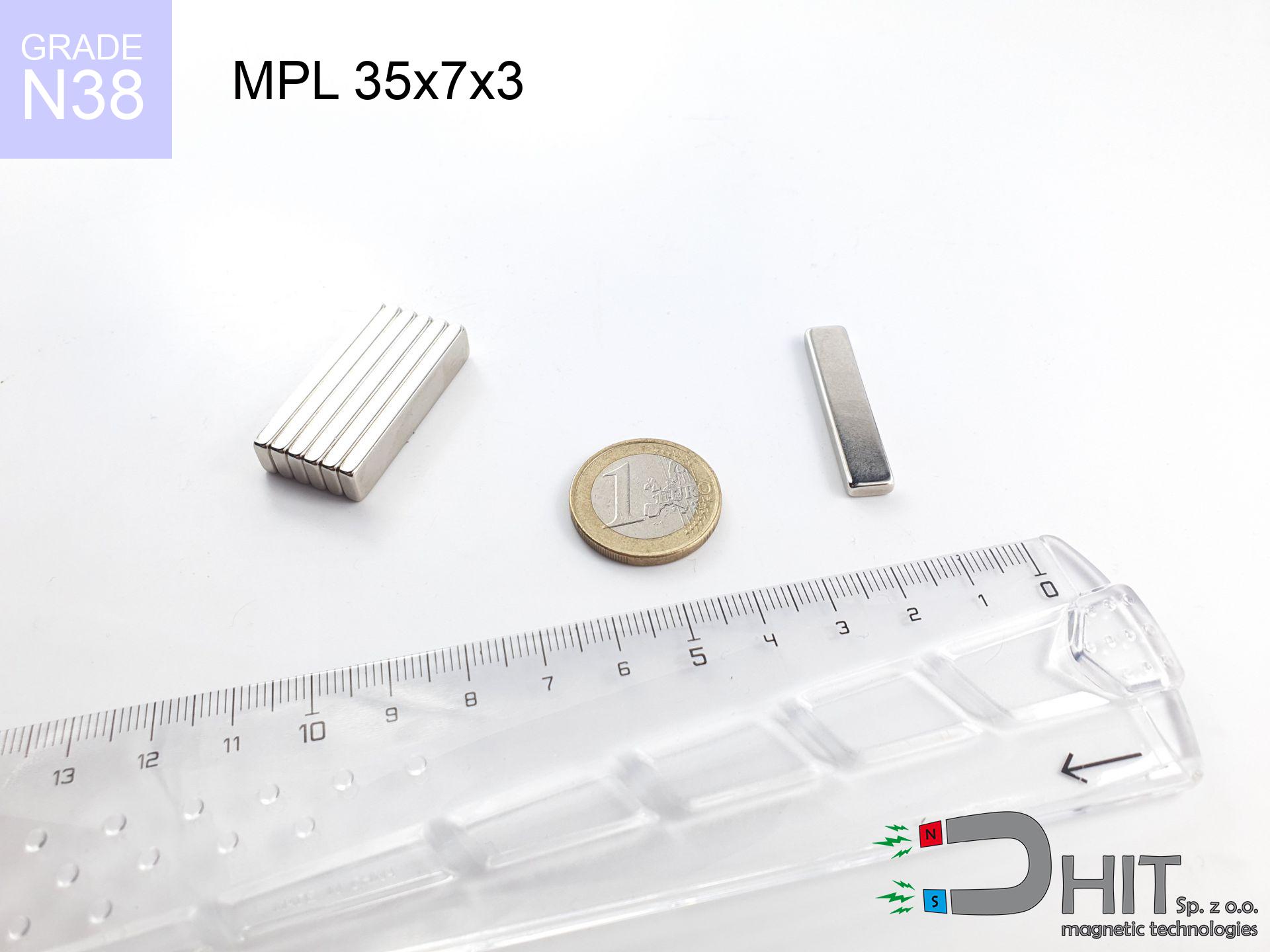BM 450x180x70 [4x M8] - magnetic beam
magnetic beam
Catalog no 090219
GTIN/EAN: 5906301812548
length
450 mm [±1 mm]
Width
180 mm [±1 mm]
Height
70 mm [±1 mm]
Weight
28900 g
4734.89 ZŁ with VAT / pcs + price for transport
3849.50 ZŁ net + 23% VAT / pcs
bulk discounts:
Need more?
Call us
+48 888 99 98 98
otherwise contact us using
form
the contact section.
Force as well as structure of magnetic components can be estimated with our
magnetic calculator.
Orders submitted before 14:00 will be dispatched today!
Technical details - BM 450x180x70 [4x M8] - magnetic beam
Specification / characteristics - BM 450x180x70 [4x M8] - magnetic beam
| properties | values |
|---|---|
| Cat. no. | 090219 |
| GTIN/EAN | 5906301812548 |
| Production/Distribution | Dhit sp. z o.o. |
| Country of origin | Poland / China / Germany |
| Customs code | 85059029 |
| length | 450 mm [±1 mm] |
| Width | 180 mm [±1 mm] |
| Height | 70 mm [±1 mm] |
| Weight | 28900 g |
| Manufacturing Tolerance | ±1 mm |
Physical properties of sintered neodymium magnets Nd2Fe14B at 20°C
| properties | values | units |
|---|---|---|
| Vickers hardness | ≥550 | Hv |
| Density | ≥7.4 | g/cm3 |
| Curie Temperature TC | 312 - 380 | °C |
| Curie Temperature TF | 593 - 716 | °F |
| Specific resistance | 150 | μΩ⋅cm |
| Bending strength | 250 | MPa |
| Compressive strength | 1000~1100 | MPa |
| Thermal expansion parallel (∥) to orientation (M) | (3-4) x 10-6 | °C-1 |
| Thermal expansion perpendicular (⊥) to orientation (M) | -(1-3) x 10-6 | °C-1 |
| Young's modulus | 1.7 x 104 | kg/mm² |
Material specification
| iron (Fe) | 64% – 68% |
| neodymium (Nd) | 29% – 32% |
| boron (B) | 1.1% – 1.2% |
| dysprosium (Dy) | 0.5% – 2.0% |
| coating (Ni-Cu-Ni) | < 0.05% |
Ecology and recycling (GPSR)
| recyclability (EoL) | 100% |
| recycled raw materials | ~10% (pre-cons) |
| carbon footprint | low / zredukowany |
| waste code (EWC) | 16 02 16 |
Other deals
Strengths as well as weaknesses of Nd2Fe14B magnets.
Pros
- They virtually do not lose strength, because even after 10 years the decline in efficiency is only ~1% (based on calculations),
- They are resistant to demagnetization induced by external field influence,
- A magnet with a smooth gold surface has an effective appearance,
- The surface of neodymium magnets generates a concentrated magnetic field – this is a key feature,
- Through (adequate) combination of ingredients, they can achieve high thermal strength, allowing for operation at temperatures reaching 230°C and above...
- In view of the possibility of flexible molding and customization to individualized projects, magnetic components can be produced in a wide range of shapes and sizes, which expands the range of possible applications,
- Huge importance in modern industrial fields – they serve a role in HDD drives, electric motors, medical equipment, as well as industrial machines.
- Thanks to their power density, small magnets offer high operating force, with minimal size,
Limitations
- At very strong impacts they can crack, therefore we recommend placing them in special holders. A metal housing provides additional protection against damage and increases the magnet's durability.
- When exposed to high temperature, neodymium magnets experience a drop in strength. Often, when the temperature exceeds 80°C, their power decreases (depending on the size and shape of the magnet). For those who need magnets for extreme conditions, we offer [AH] versions withstanding up to 230°C
- When exposed to humidity, magnets usually rust. For applications outside, it is recommended to use protective magnets, such as those in rubber or plastics, which prevent oxidation as well as corrosion.
- We suggest casing - magnetic mount, due to difficulties in realizing threads inside the magnet and complicated shapes.
- Possible danger to health – tiny shards of magnets pose a threat, in case of ingestion, which becomes key in the aspect of protecting the youngest. Furthermore, tiny parts of these devices can be problematic in diagnostics medical in case of swallowing.
- With large orders the cost of neodymium magnets is a challenge,
Pull force analysis
Maximum magnetic pulling force – what contributes to it?
- with the contact of a sheet made of special test steel, guaranteeing full magnetic saturation
- possessing a thickness of min. 10 mm to ensure full flux closure
- with a plane free of scratches
- without the slightest air gap between the magnet and steel
- for force applied at a right angle (in the magnet axis)
- in stable room temperature
Impact of factors on magnetic holding capacity in practice
- Space between surfaces – even a fraction of a millimeter of distance (caused e.g. by veneer or unevenness) diminishes the magnet efficiency, often by half at just 0.5 mm.
- Load vector – highest force is reached only during pulling at a 90° angle. The resistance to sliding of the magnet along the surface is usually many times lower (approx. 1/5 of the lifting capacity).
- Steel thickness – insufficiently thick sheet causes magnetic saturation, causing part of the power to be lost to the other side.
- Material composition – different alloys reacts the same. High carbon content weaken the attraction effect.
- Surface finish – full contact is possible only on polished steel. Rough texture reduce the real contact area, reducing force.
- Operating temperature – NdFeB sinters have a sensitivity to temperature. When it is hot they are weaker, and in frost they can be stronger (up to a certain limit).
Lifting capacity was assessed with the use of a polished steel plate of suitable thickness (min. 20 mm), under vertically applied force, however under attempts to slide the magnet the lifting capacity is smaller. Additionally, even a slight gap between the magnet’s surface and the plate reduces the holding force.
Safe handling of NdFeB magnets
This is not a toy
Absolutely store magnets away from children. Ingestion danger is high, and the effects of magnets connecting inside the body are life-threatening.
Serious injuries
Danger of trauma: The attraction force is so great that it can result in hematomas, crushing, and broken bones. Use thick gloves.
Warning for allergy sufferers
Nickel alert: The nickel-copper-nickel coating contains nickel. If skin irritation happens, cease handling magnets and wear gloves.
Heat sensitivity
Keep cool. NdFeB magnets are sensitive to temperature. If you require operation above 80°C, inquire about special high-temperature series (H, SH, UH).
Life threat
People with a heart stimulator have to keep an safe separation from magnets. The magnetic field can interfere with the operation of the life-saving device.
Protect data
Avoid bringing magnets close to a purse, laptop, or screen. The magnetism can permanently damage these devices and wipe information from cards.
GPS Danger
Note: neodymium magnets generate a field that interferes with sensitive sensors. Keep a separation from your phone, tablet, and GPS.
Eye protection
Neodymium magnets are sintered ceramics, which means they are very brittle. Clashing of two magnets leads to them breaking into shards.
Immense force
Use magnets consciously. Their powerful strength can surprise even professionals. Stay alert and do not underestimate their force.
Do not drill into magnets
Dust created during grinding of magnets is self-igniting. Avoid drilling into magnets unless you are an expert.

![Magnetic beam (separator) BM 450x180x70 [4x M8] Magnetic beam (separator) BM 450x180x70 [4x M8]](https://cdn3.dhit.pl/graphics/banners/magnet.webp)
![BM 450x180x70 [4x M8] - magnetic beam](https://cdn3.dhit.pl/graphics/products/bm-450x180x70-4x-m8-duh.jpg)

![UMGGW 22x6 [M4] GW / N38 - magnetic holder rubber internal thread UMGGW 22x6 [M4] GW / N38 - magnetic holder rubber internal thread](https://cdn3.dhit.pl/graphics/products/umg-22x6-m4-gw-jek.jpg)



